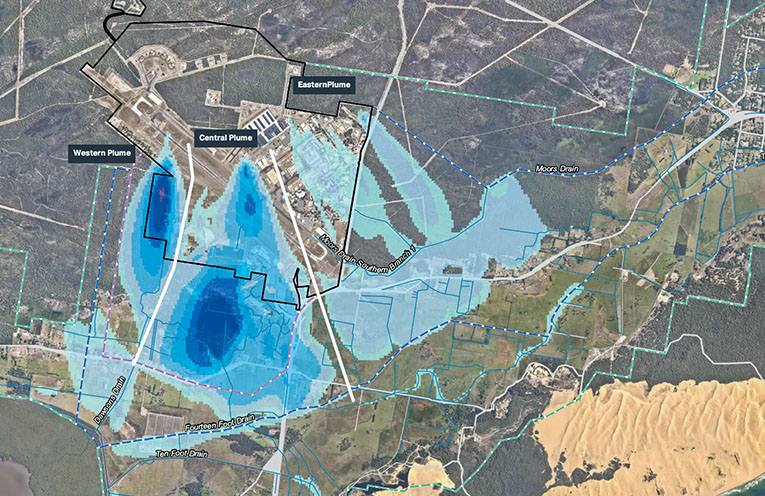
THE RAAF Base is the source of the PFAS contamination at Williamtown.
The community has been left devastated by the contaminated land, with children unable to play on their lawns safely.
 Advertise with News of The Area today.
Advertise with News of The Area today.It’s worth it for your business.
Message us.
Phone us – (02) 4981 8882.
Email us – media@newsofthearea.com.au
Those living on the rural properties have been advised not to eat their own produce, yet they can sell it into the food chain for the rest of us to ingest.
A research team led by The Australian National University (ANU) has released findings from a major epidemiological study funded by the Department of Health, which examined the potential health impacts of PFAS in three Australian communities.
PFAS (per- and poly-fluoroalkyl substances) are man-made chemicals found in a range of products, including firefighting foam and non-stick cookware.
There are many different types of PFAS chemicals, all of which last for a long time in the environment and in the bodies of people who are exposed.
Despite many international studies looking into PFAS, there is uncertainty about their health effects in people.
This leaves those living in the red zone in ‘limbo’ the values of their properties have been reduced yet they don’t know with any certainty if staying on their land will damage their health.
The study examined three communities with environmental PFAS exposure; Katherine in the Northern Territory, Oakey in Queensland and Williamtown in New South Wales.
All three communities were affected by historic use of firefighting foams containing PFAS on nearby Defence Force bases.
Overall, there was clear evidence of elevated blood serum concentrations of PFAS in residents and workers in the PFAS-affected communities, and of increased psychological distress in the three exposed communities.
“The main factors associated with people having higher levels of PFAS in their blood were the length of time they had lived in the town, whether they regularly drank bore water or ate locally-grown foods and if they had worked with firefighting foams in the past,” study lead Professor Kirk from the Australian National University (ANU) said.
“In exposed communities, one third of people reported being ‘very’ or ‘extremely’ concerned about their health, including one in five people who had serious concerns about their mental health.
“We did identify an association between higher PFAS levels in blood and higher cholesterol, which has been reported in other studies internationally.”
The evidence for other adverse health outcomes was generally limited.
For the majority of health outcomes studied, findings were consistent with previous studies that have not conclusively identified causative links between PFAS and health.
“Based on health records collected over many years, we noted higher rates of some health conditions in individual PFAS-affected communities, compared to communities without known PFAS contamination.
“However, we can’t rule out that these findings were due to chance or important factors that we couldn’t measure,” Associate Professor Rosemary Korda, a leading data linkage expert from ANU said.
Researchers from the Australian National University led the PFAS Health Study team, which included international experts on epidemiology, environmental chemistry, cancer, and statistics.
The Australian Government Department of Health funded the study.
Chief Medical Officer Professor Paul Kelly said, “The Department of Health considers this study to be an important step in better understanding PFAS exposure and potential health effects in Australia.
“The consistency of the findings of the ANU study with previous studies that have not identified direct links between PFAS and adverse health outcomes is encouraging.
“This study is the first significant piece of Australian research of this kind and we thank all those individuals who participated.”
By Marian SAMPSON
